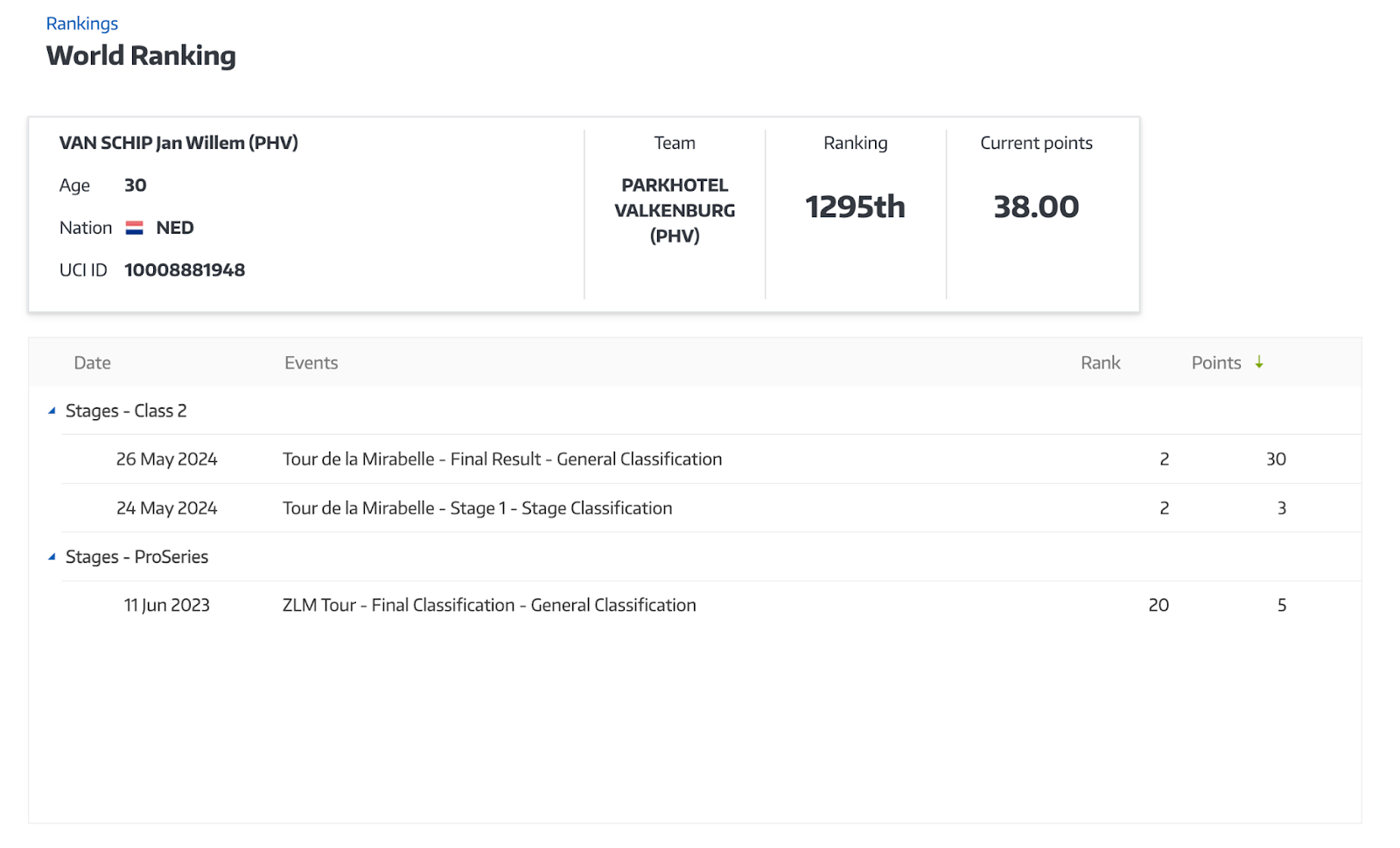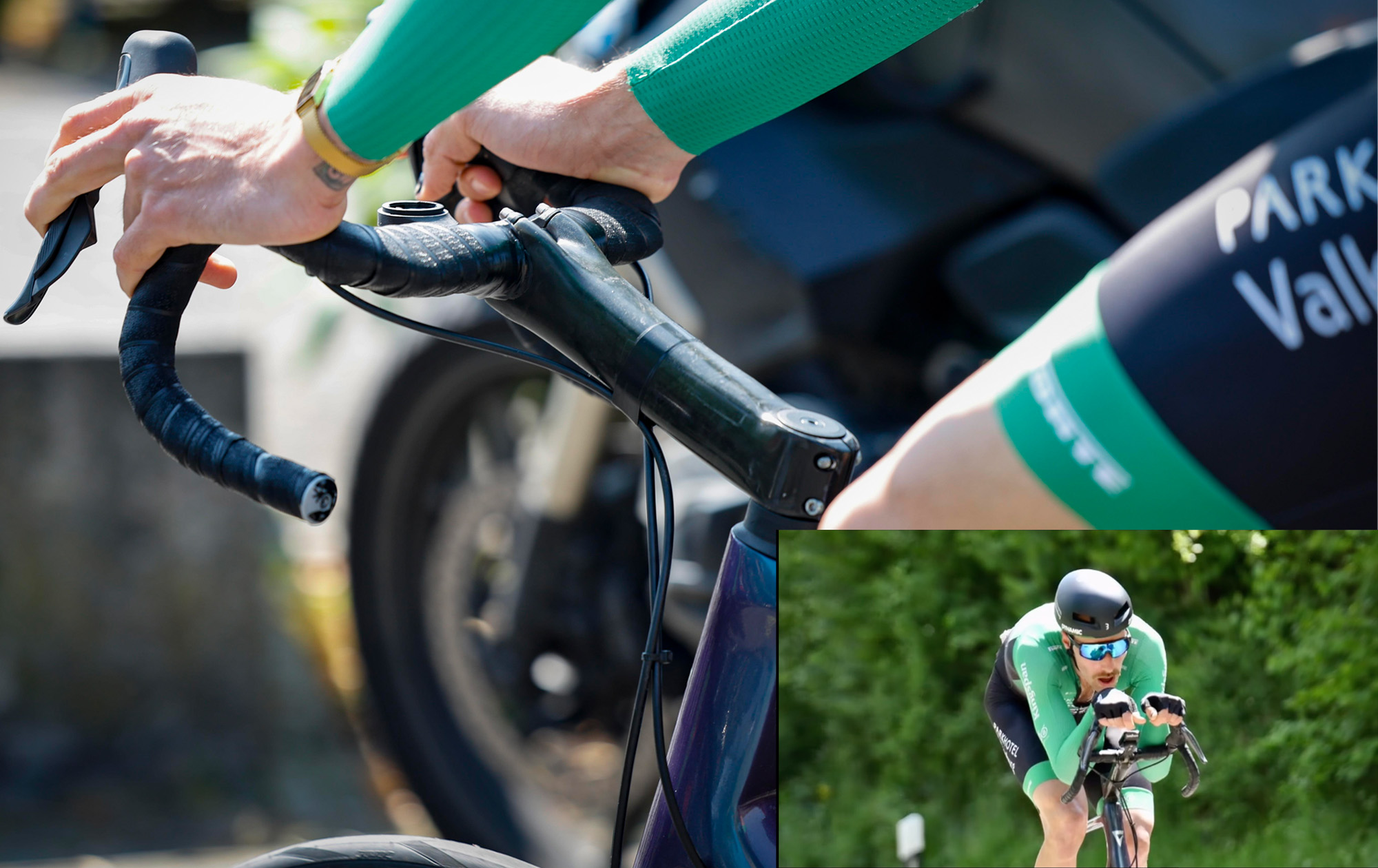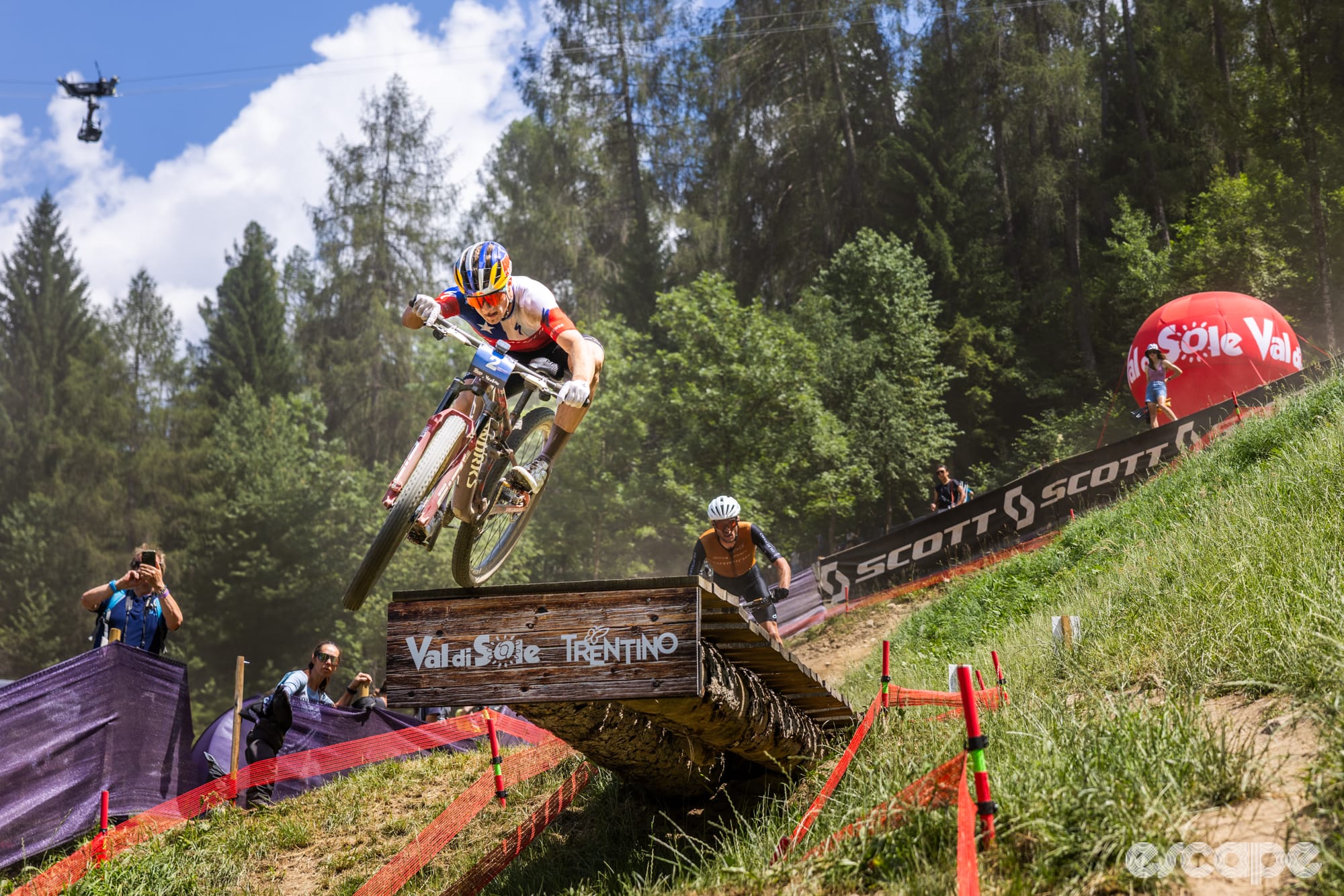Readers of last week’s edition of the Performance Process newsletter will have seen Jan-Willem van Schip utilising the Toot Engineering Ashaa RR aero bars to adopt a time trial-esque position in a road race. A noted aero experimenter, Van Schip’s latest interpretation of the UCI regulations is perhaps the most aggressive yet, using extremely narrow bars and an extremely long and steeply angled stem – again, to adopt what can only be described as a TT position.
Now, in a move that will surprise absolutely no one, the UCI has disqualified Van Schip from last weekend's Heistse Pijl (1st June), having initially classified him as 66th in the Belgian UCI 1.1 ranked race.
No explanation for the disqualification has yet been communicated and according to GCN, who first reported the news, neither Van Schip nor his Parkhotel Valkenburg team were even informed of the decision.
It did always feel like just a matter of time until the UCI responded to Van Schip’s newest position, but there are questions as to why it took the UCI so long to react, when they made the decision to disqualify Van Schip, which rule he had infringed, and if the UCI has correctly followed its own disciplinary processes. Van Schip competed in at least two races with the new setup before retrospective action was taken to exclude him from one of those events.
Van Schip has history with the UCI and post-race disqualifications. He was of course booted out of the 2021 Baloise Belgium Tour having raced with the Speeco Aero Breakaway Bar, but unlike that example, where the UCI specified the ABB bars were not permitted for use in road racing, Van Schip’s new Toot Engineering bars do not directly contravene any UCI regulations. So why was he DSQ’d?
No scandal, mostly
As much as the UCI’s intervention may appear like a Van Schip-vendetta, there’s likely no scandal in this particular example, and the DSQ can likely be more accurately attributed to a clear rule violation Van Schip made on course.
Both Van Schip’s Parkhotel Valkenburg team and Toot Engineering, manufacturers of the handlebar, posted images from the race of the Dutch rider resting his forearms on the handlebars in the extremely aero position made possible by his new handlebar and stem combination. That position is illegal as per the so-called "puppy paws" ban update to the UCI’s regulations effective April 1, 2021: “Riders must observe the standard position as defined by article 1.3.008 … using the forearms as a point of support on the handlebar is prohibited except in time trials.”
As such, and given Van Schip was seen resting his forearms on the tops of the bars to help adopt said TT-esque position, it was pretty clear the Dutchman would quickly find himself in bother with the commissaires.

That the UCI appears to turn a blind eye to countless other riders who adopt the same position but with more traditional-looking bars and setups apparently matters little. Given that Van Schip has a reputation for pushing the boundaries of this particular rule and has been actively involved in designs that facilitate it in the past, the second he rested his forearms on those tops it was practically a nailed-on certainty that the UCI would use this regulation to take action against what is presumably their true grievance: Van Schip’s new position.
While the UCI hasn’t actually confirmed this is why the Parkhotel rider was disqualified, it is the most logical explanation.
The UCI also regulates a 100 mm limit on how far forward of the front axle the handlebar can be. Using what appears to be a 180 mm stem, it's possible Van Schip’s new position could have fallen foul of this regulation also. However, the fact the team were reportedly unaware of Van Schip’s disqualification suggests his bike was not measured pre or post race. It also seems like a stretch, even for the UCI, to make a disqualification after the fact having never physically measured his setup.
In an almost perfect twist of fate, Felix Ritzinger of the Felt-Felbermayr team won a stage of the UCI-ranked Tour Malopolska using the same Toot Engineering Ashaa RR handlebar (although set up in a much more regular position) on the very same day that Van Schip was disqualified from Heistse Pijl, which adds more credence to the idea it was Van Schip’s forearms that were the issue, not the handlebar.
So if a forearm rule infringement and DSQ were always the likely outcome, why would Van Schip race with such a setup?
To answer that we must first look at those Aasha RR bars again. The bars themselves exploit a loophole in the UCI regulations limiting handlebar width, in that while the minimum width is set at 350 mm, Toot Engineering have checked that width requirement right at the edge of the flared drops. That flare means the bars are significantly narrower at the hood position. Leaning on the permitted 10° of flare on the hoods, riders can incline their levers right the way in to as little as 20 cm wide at the top of the hoods. This narrow width, coupled with Van Schip's long and steeply inclined stem, facilitated his adoption of that time trial-esque position.
Setting aside the stem for a second, the exact geometry of the Aasha RR bars means riders can theoretically benefit from getting much narrower on the hoods in a more upright position that's closer to a traditional road position, so staying within the regulations and crucially not falling foul of the forearm rules. Again, more evidence for the argument is was Van Schip's forearm rest that caused his DSQ.
Some scandal? Yes
If there is a scandal to be identified, it is perhaps in how the UCI seems to have discreetly applied this disqualification days after the race without following procedure for such retrospective actions. What is the UCI’s process for disqualifying a rider, and just why was the team not informed of their rider's disqualification? Escape Collective has asked the UCI for more details on the disqualification but have not yet received a reply.
As covered earlier, it seems Van Schip was disqualified for an infringement on article 2.2.025: rider conduct; specifically, by using his forearms on the tops he had infringed the regulations relating to “position on a bicycle.”
The penalty for said infringement is laid out in article 2.12.007 section 7 of the UCI’s table of penalties for “race incidents relating to road events”: “Irregular behaviour, in particular behaviour that affords a team or rider a sporting advantage or that is dangerous." With in that section, point 7.9 states: “Using a non-compliant position or point of support on the bicycle that represents a danger to the rider or competitors.” Infraction carries a CHF 500 fine and a 15-point deduction from their UCI rankings and elimination or disqualification.
To be fair, the UCI is pretty clear on what constitutes an infringement and how such infringements are penalised; it's just the enforcement is seemingly rather random or, rather, selective.
Considering those penalties for a second, we know Van Schip was disqualified, but his UCI ranking, last updated on June 4th three days after the race, shows no indication of the mandatory 15-point deduction. This may indicate that the decision to fine and disqualify Van Schip came days after the race or in other words: after the race Commissaires’ Panel has disbanded.

The timing may be crucial, in that article 12.5.001 of the UCI’s discipline and procedures policy states that “the Commissaires’ Panel may issue decisions on race incidents of which it becomes aware until the moment it is disbanded.” If the disqualification came days later, it couldn’t have come from the race’s commissaire panel.
But Van Schip isn’t off the hook just because his infringement wasn’t actioned by the panel before disbanding. As laid out in the UCI’s Discipline and Procedures document, a Disciplinary Commission may penalise certain infringements post race provided the infringement is within its jurisdiction.
Bear with us here, because article 12.5.004 of the same document covers the Disciplinary Commission’s jurisdiction and, long story short, the commission has jurisdiction over incidents such as Van Schip’s and may look at an incident regardless of whether the race commissaires have actioned it or not.

Finally, there is the issue of notification of the disqualification to Van Schip.
Article 12.5.002 of the discipline and procedures document specifies that “decisions are notified by means of the publication of a communiqué by the Commissaires’ Panel,” but, as highlighted above, if the penalty was only actioned after the panel had disbanded, as seems to be the case, this method of notification as an option would have passed.
The article continues, “they may also be notified verbally to the individual in question or his team.” If it is true neither team nor rider were aware of the disqualification, then the UCI has not followed its own procedure for applying such penalties. If that is the case, perhaps Van Schip has a case to have the whole thing dropped and his 66th place reinstated.
Appeal process
So can Van Schip appeal? Well, he is unlikely to given how much time and effort it would require just to get the number 66 reapplied to his palmarès. It’s not entirely clear whether he even could if he so wished.
As laid out in the same documents, any appeal must be submitted within a 10-day window post notification of a fine or penalty. But it seems Van Schip wasn’t notified, and it is unclear where a non-notification leaves the penalty and option to appeal.
Furthermore, chapter IV of the UCI’s articles on discipline and procedures states such penalties may be appealed if the fine exceeds CHF 500 for a race such as Heistse Pijl. Given, as mentioned above, an infringement of the forearm regulation carries a mandatory CHF 500 and the appeals option opens with fines exceeding CHF 500, any appeal option likely comes down to exactly how much, if anything Van Schip was fined. But if the team was unaware of the disqualification, it seems unlikely he was handed a monetary fine, which again raises questions about the UCI’s ability to follow its own regulations. This may also highlight an issue with the appeals process if commissaires are likely to apply the fines as listed, but the option to appeal doesn’t arise until exceeding said listed fines.
While many questions remain, the most important being: can Van Schip escape future disqualification if he uses the same equipment but refrains from leaning his forearms on the tops? As is so often the case with the UCI, your guess is as good as ours.
Did we do a good job with this story?




